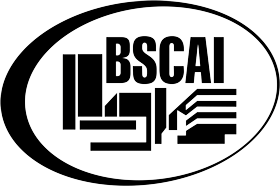
Eric Luke didn’t start off in the building service contractor industry. His first taste of career success came in the 1980s as a CPA, senior accountant and small business consultant for Arthur Andersen in San Francisco. As that decade came to a close, he joined Varsity Facility Services in Denver as a district manager. Luke has gone on to play an integral role in the development of the company’s national accounts and facility maintenance and construction divisions for almost three decades now.
Today, Varsity Facility Services is a North American building services company with approximately 3,800 employees from Alaska to Florida and throughout Canada. The firm cleans, repairs and builds commercial facilities. In 2010, Luke became the company’s fourth president and CEO.
Part of his success is thanks to the methodical way he approaches cleaning schedules. Luke knows his methods delivery quality results for his customers and for his business. BSCAI recently sat down with him to discuss how his cleaning schedule system plays into his company’s role as a juggernaut in the industry.
BSCAI: What are the keys to creating a balanced and productive cleaning schedule — one that is thorough and efficient, yet doesn’t cut corners?
ERIC LUKE (EL): Focus on safety and health of tenant or occupants first. Make sure those are addressed. Then ask, “How much time is it really going to take to do the schedule the customer or tenant desires?” It might require a consultant watching the current cleaner or company and do a time schedule study. Find out what it really takes. Ask yourself, “Are they using the right and best equipment? Is the most critical areas of possible complaints or health risk adequately staffed?” Restroom cleaning, for example, should account for around 20 percent to maybe 25 percent of the total nightly labor budget. This will cover most of the potential complaints.
BSCAI: Where do facilities and facility managers often go wrong when putting together such schedules?
EL: The most common mistake in creating a planned cleaning schedule or scope of work is not starting with two end customers in mind. Those two end customers are the owner of the facility who is footing the bill [and] setting the budget, and the end user or tenant using the space.

 The Down and Dirty on Cleaning in Virus Season
The Down and Dirty on Cleaning in Virus Season How Surfactant Use is Expanding in Commercial Cleaning
How Surfactant Use is Expanding in Commercial Cleaning Maximize Your Margins: Learn How to Automate Pricing and Track Rebates
Maximize Your Margins: Learn How to Automate Pricing and Track Rebates